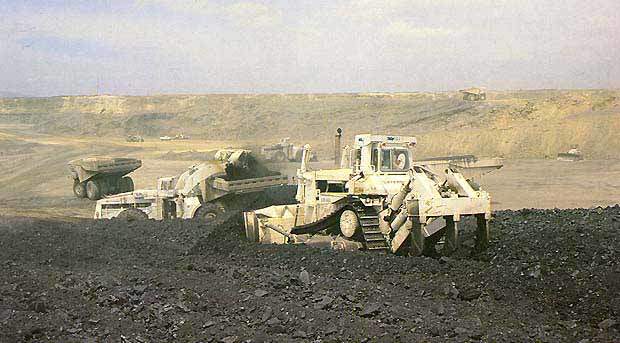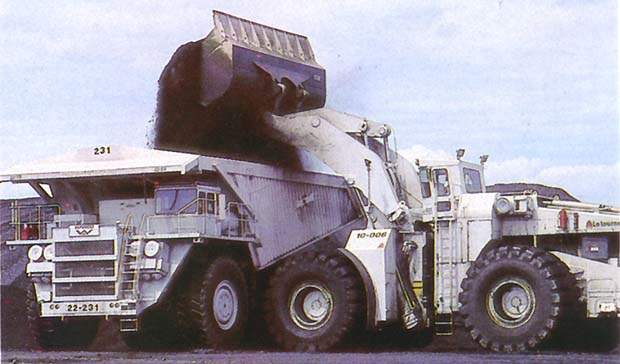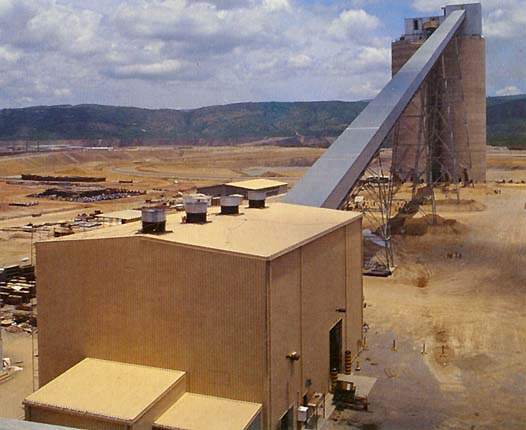The largest coal mining operation in Latin America, Carbones del Cerrejón Norte was developed by a joint venture between the Colombian state organisation, Carbones de Colombia (Carbocol) and Intercor, a subsidiary of the US energy company ExxonMobil.
In 2000, Carbocol’s assets were acquired jointly by Anglo American, BHP Billiton and Glencore, and in early 2002 the three partners bought out Intercor for $366m. The partners subsequently merged their adjoining Carbones del Cerrejón mine with Cerrejón Norte so as to optimise the operation, under the management of the Cerrejón Coal Company. In 2006, Glencore’s stake was acquired by Xstrata.
The mining complex lies in the Guajira Peninsula in northeast Colombia. Capacity at the mine was expanded to 28Mt/y during 2006, with a further expansion to 32Mt/y completed in 2008. Full production of 32Mt/y was achieved in 2009.
The partners in the mine are currently carrying out a feasibility study into expanding its capacity to 40Mt/y by 2014, with an output of 50Mt/y already being considered. Carbones del Cerrejón had an output of 32Mt of thermal coal in 2009. Including contractors, it provides employment for around 7,800 people.
The Carbocol-Intercor joint venture has a 33-year life covering exploration (1977–80), construction (1980–86) and production (1986–2009) phases. This was later extended to 2034. Over 90% of coal sales are made under long-term contracts.
Total investment in the Carbones del Cerrejón project, including the mine, port and all the associated infrastructure, was in the order of $3,000m. The prime contractor for the construction phase was US-based Morrison Knudsen Co.
CMC – (Coal Marketing Company) is the exclusive marketer of the mine worldwide. CMC and Carbones del Cerrejón are sister companies. the former being owned equally by Anglo American, BHP Billiton and Xstrata.
Geology and reserves
Carbones del Cerrejón’s reserves are of tertiary low-ash, low-sulphur, non-caking bituminous coal that is suitable for power station fuel and for pulverised fuel-injection in steel making. Proven in-situ reserves totalled 502.9Mt. Probable reserves stand at 241Mt as of June 2009. Measured, indicated and inferred resources have been estimated at 1,218.4Mt, 964.5Mt and 92Mt respectively.
There are around 40 economically recoverable seams, and current production is centred on those ranging from 700mm to 10m thick (averaging 3m). The Cerrejón basin is bounded by major thrusts and faults while folding and faulting has also formed blocks within the basin. Seam dips average 16°.
The project partners are currently evaluating the South deposit, for which they received the concession in 1997.
Open-pit mining
Coal is produced from seven open pits in a multiple-seam operation using a standard 15m bench height. Around 32Mt of coal was produced in 2009, with mined-out panels being backfilled progressively.
After topsoil stripping, overburden is drilled, blasted and loaded out either to permanent waste dumps or for backfill. Waste handling is carried out by 12 P&H 2800 electric mining shovels, equipped with 27.5m³ buckets, which load into a fleet of 136 154t-capacity Wabco and Euclid rear-dump haulers. The shovels are supported by two Demag H241 hydraulic shovels, fitted with 14m³ buckets. Coal seams are prepared for mining by surface cleaning using rubber-tyred bulldozers then ripping or drilling and blasting in harder material. The broken coal is dozed into windrows, from which LeTourneau L-1100 and L-1200 wheel loaders equipped with 25m³ buckets load the coal into a fleet of 16, 154t-capacity rear dump trucks.
These unload into one of three 300t-capacity hoppers, the run-of-mine coal then being crushed to –50mm in a two-stage process. The crushing plant has a capacity of 3,500t/h with crushed coal being conveyed into the two loadout silos. Run-of-mine coal with higher ash or sulphur content, which accounts for about 20% of production, is stockpiled before crushing and rehandled as required for blending purposes.
Port facilities
The mine is connected by a 150km-long standard-gauge railway to the ship loader at Puerto Bolivar. Two 120-car unit trains are used to transport 48,000t/d of crushed coal from the mine’s loadout to the port stockyard, with an average four journeys a day.
The port’s 6,000t/h coal-handling system can either place the coal on to stockpiles or move it directly to the ship loader. Puerto Bolivar has a single loading pier, capable of handling vessels up to 150,000dwt.
The stockyard has a capacity of 1.7Mt, of which 1.0Mt is live storage. It is serviced by three stacker-reclaimers that feed a single 10,000t/h ship loader.
Coal quality
Most of the mine’s output is D, Dm and E.






